Should you have a Nintendo Sound Clock: Alarmo by your bedside? Plus hands-on with the Logitech G PowerPlay 2 and Monster Hunter Wilds.
Nintendo has never been a conventional company. From fitness balance boards to cardboard playthings, the Japanese company is known for zigging when people expect them to zag. So, while the gaming world patiently waits for the Switch 2, Nintendo hopes to temporarily satiate that appetite with… an alarm clock? Yes, Nintendo Sound Clock: Alarmo is hardly what you might have expected, but in traditional Ninty fashion, it’s big, bright, quirky and packed full of charm.
When it comes to Alarm clocks Nintendo Sound Clock: Alarmo is by no means a cheap investment. Picking one up (which thankfully you can now easily do via the My Nintendo Store) will set you back $159.95. There’s no getting around it – that’s a huge amount of money for an alarm clock. But then again, this is far from your conventional unit, even though you wouldn’t be able to tell that from looks alone. That’s because straight of the box, Alarmo is pretty darn cute. I found the circular design and red/black combo to be surprising appealing, and although it’s naturally a bit cartoonish and child-like, I still found it didn’t look completely out of place beside a wide range of electronic gadgets on my bedside table.
And you’ll need to keep it on your bedside table if you want to make the most of Alarmo’s feature set. That’s because this might be one of the most interactive clocks you’ve ever dealt with thanks to an internal motion sensor that’s capable of knowing if you’re actually trying to get out of bed or attempting a cheeky snooze.
You just need to select from 35 different alarms across five Nintendo games out of the box (but you will be able to download more once you hook the unit up to Wi-Fi) and the moment the alarm starts you’ll be greeted to a range of sounds and tunes based on that title. Try to resist and Alarmo might give you a brief reprieve but eventually increase in volume until you act. Once you do start making movements a range of character-specific action cues (like Link’s sword slashing or Mario collecting coins) are triggered. Depending on what game you choose it can certainly feel like a lot (like Mario’s constant coin collecting), but considering the goal is to get you out of bed, it certainly succeeds.
The biggest issue with all this is that Nintendo Sound Clock: Alarmo can’t handle more than a single person in the bed, meaning of you have pets or a significant other, the biggest appeal of the device falls apart. It also means it significantly reduces the user base of the unit if you want to make use of its full potential. It’s also disappointing that Alarmo can’t make full use of its screen real estate, keeping everything in a typical rectangular format. It makes sense that Nintendo has chosen the path of least resistance, but I would have hoped that if they designed a circular device that they plan some sort of display to make use of it rather than shove in much uglier black bars.
Love Film & TV?
Get your daily dose of everything happening in music, film and TV in Australia and abroad.
Nintendo Sound Clock: Alarmo’s motion tracking also allows the device to have one more trick up its sleeve – sleep tracking. Thanks to the in-built motion sensor you can keep abreast of when you fall asleep, when you wake and even how restless you prove to be throughout the night. It’s obviously not going to be as accurate as your smartwatch or sleep-specific device, but the fact that it’s capable of tracking is still welcome for a more child-skewed product.
The one problem with all this is that you read data or browse through menus you’ll need to do it all on-device. With the adorable rotatable top button (which can also be used to stop/snooze alarms if you choose a less physical approach) that’s not the end of the world, but I’ll admit that it would have been nice to have some sort of companion app to soft through some of the settings or browse some of your sleep data.
The reality of Nintendo Alarmo is that even if you don’t fit within the quite specific use-case scenario that Nintendo’s device caters for, you’re going to want one anyway. It’s well-designed and cute enough that you could easily use it as a clock on your desk or ornament shelf even without all the fancy motion tracking. Plus, years down the line it’ll be a fun collector’s item to hold onto. So long as you can stomach the steep asking price, it’s bound to make you smile in the way only Nintendo can.
Nintendo Sound Clock: Alarmo is available now for $159.95 via the My Nintendo Store.
Also out now…
Logitech G PowerPlay 2
When it comes to mouse pads, it’s safe to say there hasn’t been a whole lot of innovation. But in 2017 Logitech tried something new with its PowerPlay device. Now, years later we finally have the Logitech G PowerPlay 2 and after many hours of testing it’s certainly proved to be an interesting follow-up.
Within moments of hooking up the PowerPlay 2 it’s evident that the core principles of its predecessor have remained intact. That means you’re still able to throw a range of compatible Logitech mice onto the PowerPlay 2 and never have to worry about extra cable management or recharging your mouse for as long as it’s in use.
It’s all thanks to two systems: the POWERPLAY 2 Coin which can be popped into the backside of your compatible mouse, and the base pad which hides an internal charging unit to help power said Coin. It sounds more confusing than it actually is in practice, and much like the original, you’ll be up and gaming in mere minutes. If you’re part of the Logitech ecosystem, it’s an incredibly nifty unit, even though it doesn’t differ all that much from the original.
So what’s changed for the better then? The big one is compatibility – the PowerPlay 2 now plays nice with a much broader spectrum of mice including the G309, G502 X PLUS, G502 X LIGHTSPEED, G703 and more. Plus, Logitech promise more releases in the future will also work. It’s also thinner, at 3.5mm and features a 15% larger charging area ensures improved charging performance. I was a huge fan of the original device, so it should come as no surprise that I’m equally a fan of the PowerPlay 2. It works perfectly with my G502 X LIGHTSPEED and is still super comfy for my wrist despite the thinner formfactor. It’s not the biggest pad around, but gliding is super smooth and blends well aesthetically into my workspace.
What’s most curious though is that Logitech has made three strange adjustments to the pad’s control module. First is that the RGB functionality on the Logitech G logo has been given the boot in favour of a flat finish, meaning the device lacks some of the flair modern gamers look for. More interesting though is the cord connecting between the pad and your PC is now fixed (compared to the previous iteration’s removable option). That’s probably not going to be a huge deal for most, but it does make cable management a bit more annoying and does mean that the whole unit is in trouble should you ever have an issue with the connecting cable. Finally, and perhaps most annoying for me is that the wireless mouse receiver has also been given the flick, meaning I now need to use another USB slot for my dongle instead of letting the mouse pad handle it for me.
All this does raise the question: should you just grab an original PlayPlay instead. If you’re happy to main one of that unit’s compatible mice (like the popular G502 and G703) I honestly think it’s not a bad idea. There’s arguably more functionality and you can probably pick one up at a reasonably discounted rate.
At the end of the day though, the PowerPlay 2 is still a solid device that offers a unique experience. It’s plays well, looks great, starts at a cheaper price point and is great if you’re part of the Logitech ecosystem. I just can’t help but wish it packed a little more evolution after all this time.
The Logitech G PowerPlay 2 is available now for $199.95 via the Logitech store.
Monster Hunter Wilds (PS5, Xbox Series X/S, PC)
If Monster Hunter World managed to lure unsuspecting gamers towards the longstanding franchise, Monster Hunter Wilds is bound to cement them as hardcore devotees. That’s how enjoyable this adventure is.
After what feels like years of refinement, everything in Wilds sings. The combat is rock solid, with not only an incredibly broad range of weapons to choose from (ranging from swords to bows and hammers), but a pretty expansive range of beats to take on as well. The loop itself of hunting and crafting isn’t dramatically different, but it’s a hell of a lot of fun all the same.
A much stronger narrative certainly aids in this enjoyment. Story has never been a strong suit of Monster Hunter, but Wilds certainly puts its best foot forward, with great cinematics and enough motivation to see you through. The game also looked bloody great on my PS5 Pro
If you’re a total newcomer to the series, Monster Hunter Wilds might be the best time to jump in, but the devs could still certainly improve the onboarding experience. There’s a lot to take in and early tutorials could do a much better job in the way of providing explanations.
Even still, Monster Hunter Wilds is expansive, engaging and already one of the best games of 2025.
For more on this topic, follow the Gaming Observer.

































